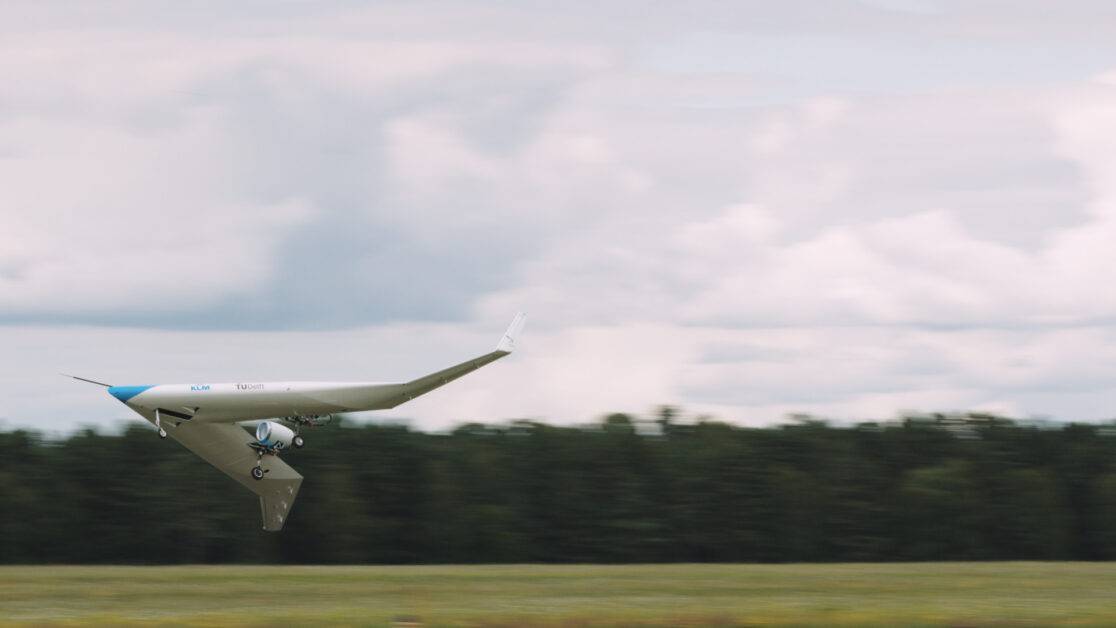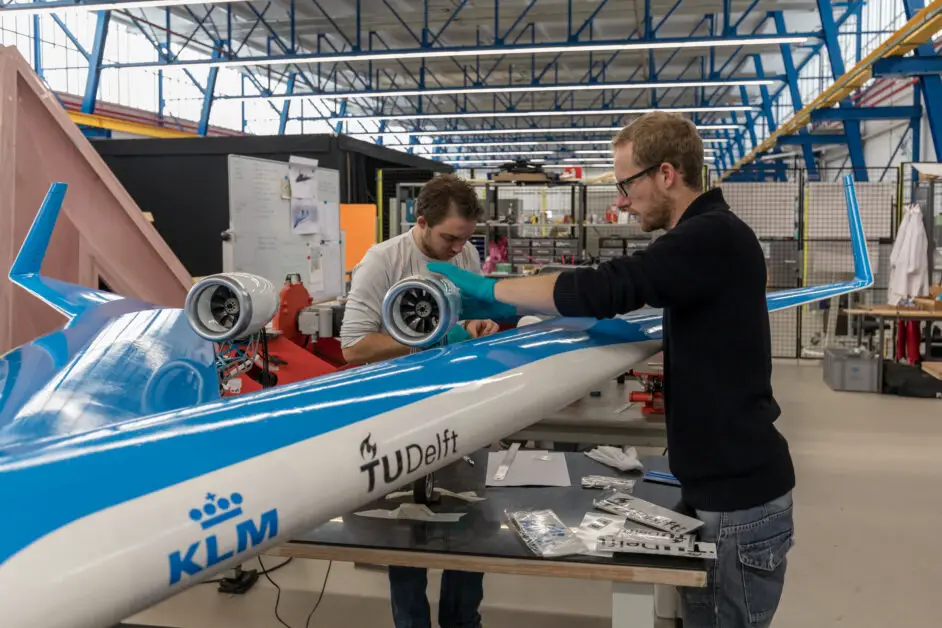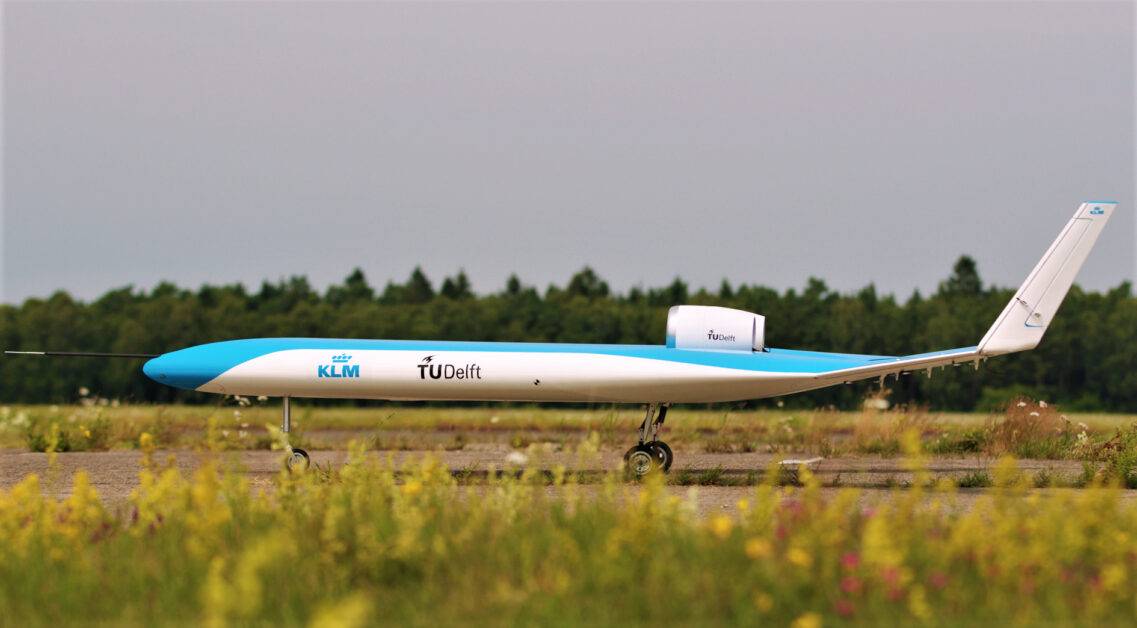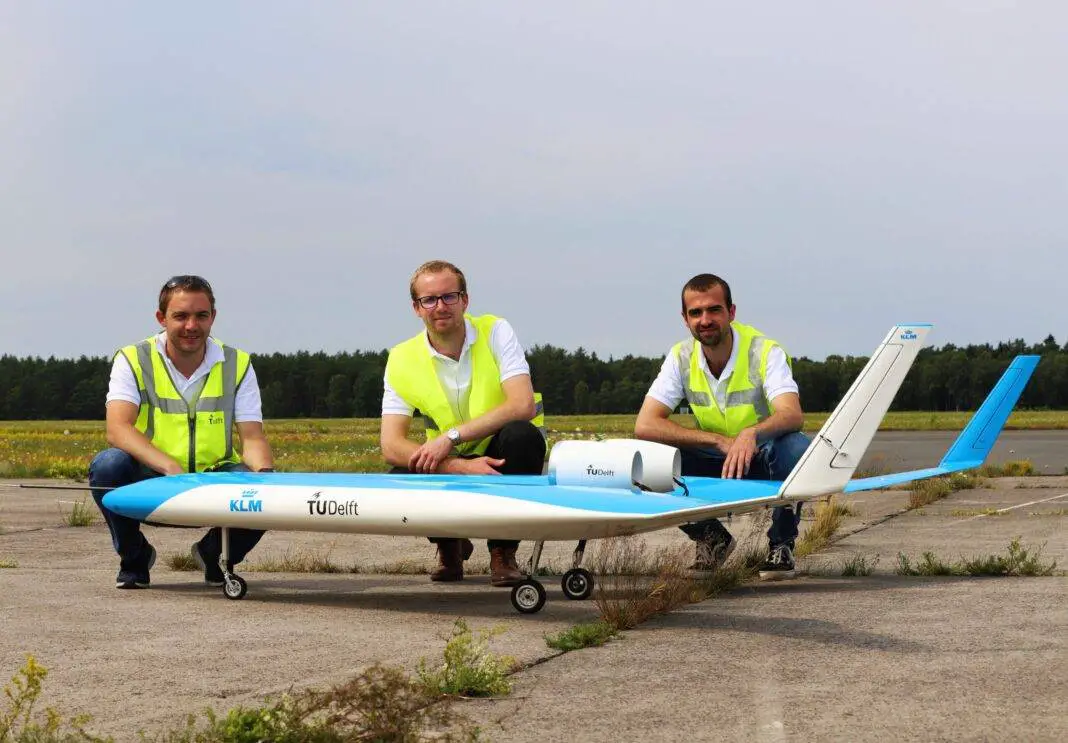FLYING-V PLANE TEST FLIGHT IS SUCCESSFUL
A Flying-V scaled model aircraft conducted its first successful test flight in Germany. The V shape blended wing plane concept was unveiled by Dutch researchers last year. This amazing futuristic aircraft is proposed to be highly fuel-efficient without compromising the performance.
The Delft University of Technology (TU Delft) based in the Netherlands partnered with the Dutch flag carrier KLM to make this Flying-V plane a reality. The European giant aircraft manufacturer Airbus has become the latest partner after showing interest in the project.
The test flight was conducted at a guarded airbase in Germany under the presence of a technical team and also with the support of the Airbus team. The model plane was controlled by the drone pilot TU Delft Ph.D. candidate Nando van Arnhem via the radio connection.
The total weight of the scaled model aircraft was 22.5 kg with a wingspan of 3.06 meters and a length of 2.76 meters. The test flight included take-off, climb, cruise, maneuvers, landings, and much other technical stuff until its 6kgs lithium polymer battery went off.
The test flight team managed to take off the plane at a speed of 80 kmh which is equivalent to 43.12 knots. The airplane’s flight speed, angles, and thrust were executed as per the plan.

An assistant professor of flight performance and propulsion at TU Delft said, “One of our worries was that the aircraft might have some difficulty lifting-off since previous calculations had shown that ‘rotation’ could be an issue. The team optimized the scaled flight model to prevent the issue but the proof of the pudding is in the eating. You need to fly to know for sure.”
The technical team said there is still more task to be done to prepare the aircraft before it could fly to the skies carrying passengers. The team also found out that the current design of the aircraft allows too much Dutch roll causing rough landings.

Besides, the design also makes it complex for leveling wings resulting in erratic flights. The experts and technical team will use all the collected information and data from the test flight to eradicate the errors and improve the performance.
The first Flying-V plane test flight has provided huge confidence to the manufacturing team as they will be working relentlessly for the aerodynamics and more test flights.
Building model for FLYING-V plane test flight

- It took around 1 and a half years from viable concept for flying-v plane test flight.
- The Flying-V-team built the scale model in-house with assistance from composites experts of the university.
- Some components, in particular some metal parts of the landing gear, had to be custom made by other suppliers.
- The scale model has a combination of commercial and custom-made in-house systems to control the plane and measure all of the relevant flight data.
ABOUT FLYING-V CONCEPT

The Flying-V aircraft is a futuristic design for a high energy-efficient long-distance airplane. The aircraft is to be designed for integrating the passenger cabin, the cargo hold, and the fuel tanks in the wings, creating a spectacular v-shape.
As per the design of the aircraft, it will consume 20 percent less fuel than the Airbus A350 aircraft due to its advanced aerodynamic shape.
The Flying-V is an idea and concept generated by the TU Berlin student Justus Benad during his thesis project at Airbus Hamburg. The aircraft is not as long as the Airbus A350 however, the wingspan of both the aircraft is the same. The aircraft will be designed to carry the same number of passengers (314) as of the Airbus A350, today’s most advanced aircraft.
Dr. Roelof Vos, project leader at TU Delft said, “The Flying-V is smaller than the A350 and has less inflow surface area compared to the available amount of volume. The result is less resistance. That means the Flying-V needs less fuel for the same distance.”
The aircraft will be lightweight, comfortable for passengers with seating options like lounge chairs, group seating, individual seats, and collapsible beds.
The project research team said they are investigating and researching new forms of propulsion, such as electric and electric hybrid, the climate impact of aviation, airport operations so that the Flying-V aircraft can be designed with more environmentally friendly features.





